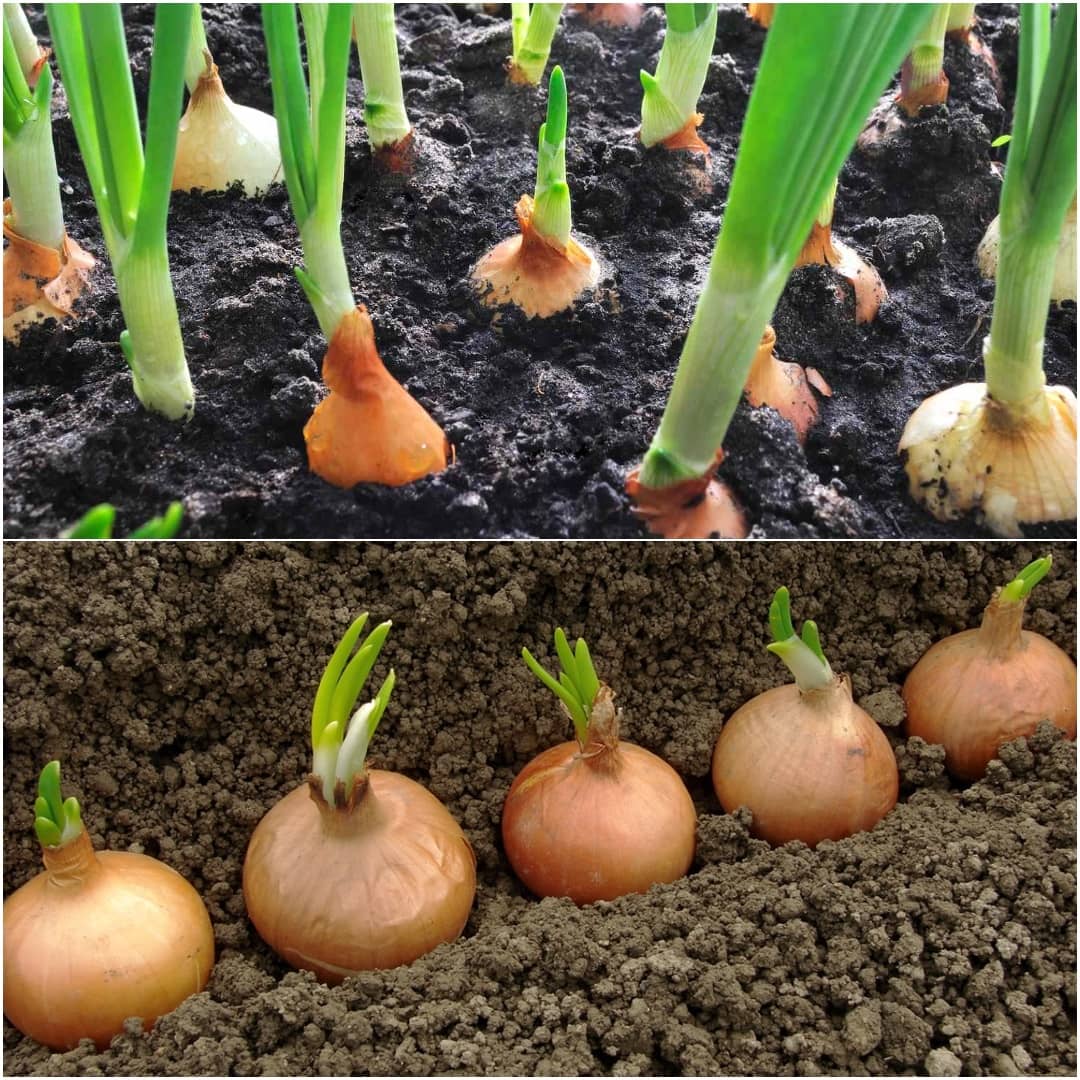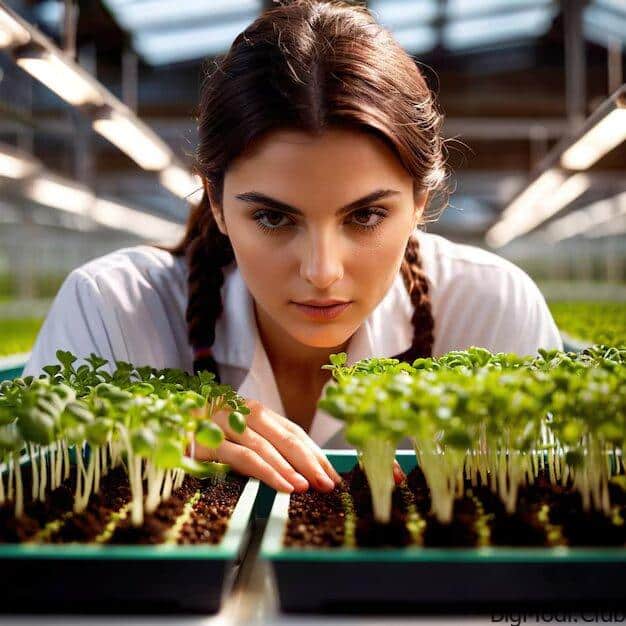Growing onions is a straightforward and rewarding process that can yield abundant results if done correctly. Onions are a versatile crop that can enhance your culinary creations with rich flavors. In this guide, we will walk you through basic steps for growing onions, from selecting the right varieties to planting, caring, and harvesting them. By the end of this article, you’ll be equipped with the knowledge to grow healthy and flavorful onions in your home garden.
Planting Onions: The Right Start for a Healthy Crop
When to Plant
To get the best results, it’s essential to plant onions at the right time. Start planting onions in early spring, once the ground becomes workable. This means the soil has thawed and is soft enough to dig into without too much resistance. Onions are cold-tolerant and prefer cooler conditions for their initial growth, so planting early gives them a head start before summer heat sets in.
Choosing the Right Location
Onions thrive in sunny locations where they can receive at least 6-8 hours of direct sunlight daily. Choose a site that offers fertile, well-drained soil with a pH between 6.0 and 6.8. Avoid low-lying areas where water may accumulate, as onions do not perform well in waterlogged soil.
Planting Methods
There are two main options for planting onions: in-ground gardens or raised beds. Both options work well, but raised beds are ideal for areas with poor drainage. Space onion plants 6 inches apart in rows that are 12 inches apart. This spacing ensures that the bulbs have plenty of room to grow without competing for nutrients or water.
Soil Preparation: Creating the Ideal Environment for Onions
Onions require rich, well-drained soil to reach their full potential. Before planting, it’s a good idea to improve the soil’s fertility by mixing in several inches of aged compost or other rich organic matter. This provides a balanced blend of nutrients that onions need for healthy development.
If you’re working with heavy clay soil, consider using raised beds or mounded rows. These methods help ensure good drainage, which is crucial for onion crops. A well-drained soil mix, such as Miracle-Gro® Performance Organics® Raised Bed Mix, works best for raised beds. For in-ground planting, mix a 3-inch layer of compost or aged compost-enriched soil into the top 6 inches of your garden bed.
Planting Depth
When planting onion seedlings or slips, set them about 1 inch deep, ensuring their roots are well covered with soil. However, avoid burying the neck of the plant too deeply, as this can trap moisture around the leaves, leading to rot.
Watering Onions: Keeping the Soil Moist for Optimum Growth
Onions have shallow roots, meaning they aren’t very efficient at absorbing water. This makes it essential to keep the soil consistently moist but not waterlogged. A general rule of thumb is to water the onions whenever the top inch of soil becomes dry.
Though onions can survive brief periods of drought, it’s important not to let the soil dry out for long stretches. Continuous, steady watering ensures the bulbs develop without interruptions. Using a soaker hose or drip irrigation system can help maintain consistent moisture levels.
Feeding and Fertilizing: Nutrition for Strong Onion Plants
To achieve the best results, onions need to be fed regularly with plant food. Choose a continuous-release fertilizer that provides a steady supply of nutrients throughout the growing season. One excellent option is Miracle-Gro® Performance Organics® Edibles Plant Nutrition Granules. Follow the manufacturer’s instructions to avoid over-fertilizing, which can lead to weaker plants.
Regular feeding ensures that your onions get the essential nutrients required to grow large, healthy bulbs. Combine this with nutrient-rich soil, and you’ll be setting your onions up for success.
Mulching: A Smart Strategy for Moisture Control
Mulching is a helpful technique to retain moisture and control weed growth around your onions. Apply a light layer of mulch such as weed-free grass clippings or another fine organic material around the base of the plants. However, be cautious not to apply too much mulch, as it can trap moisture and lead to bulb rot. As the bulbs form, they naturally push toward the soil’s surface, and it’s best to let the tops of the bulbs bask in dry sun.
Troubleshooting Common Onion Problems
Growing onions can sometimes be interrupted by pests and diseases. Here are a few common issues to watch out for:
- Onion Thrips: These tiny black insects can suck the sap from onion leaves, stunting growth. Thrips often hide in the folds of the leaves, making them difficult to spot.
- Aphids: These small, soft-bodied insects feed on the leaves, causing them to curl and weaken.
- Onion Root Maggots: These are the larvae of a common fly that attack onion roots, leading to weak plants that may wilt.
To address these problems, contact your local agricultural Extension agency for advice on control methods specific to your region.
Harvesting and Storing Onions for Long-Term Use
Young Onions
If you prefer to enjoy your onions as spring onions or scallions, you can begin harvesting them just a few weeks after planting. There is no perfect size for these early harvests—simply pull the onions when they’ve reached the size you desire.
Full-Sized Bulbs
For those looking to grow full-sized bulbs, allow the onions to grow until the bulbs are large and the tops begin to turn yellow and fall over. This signals that the onion is ready to be harvested. At this point, carefully pull the onions from the ground, shake off any excess soil, and lay them out to cure.
Curing is an essential step in preparing onions for long-term storage. Lay the onions in a warm, airy place with the tops still attached for 7 to 10 days. This allows the roots to dry out, and the tops will begin to shrivel. Proper curing helps seal the tops of the bulbs, reducing the risk of rot.
Storage Tips
Once the onions are cured, trim the tops and roots with pruning shears, but be careful not to remove too much of the outer papery skin. Store your onions in a cool, dry place with good air circulation. For sweet, juicy onions, you may want to store them in the refrigerator, wrapped in newspaper or paper towels to retain moisture.
FAQs:
Can you grow onions from an onion?
Yes, you can grow onions from an onion! To do this, take an onion that has started sprouting and cut it into sections, each containing a part of the sprouting center. Plant these sections in soil with the sprout facing up. Water them regularly, and new onion plants will grow from the cut pieces. However, onions grown this way are often smaller than those grown from seeds or sets, but it’s a fun and simple way to regrow onions at home.
How long do onions take to grow?
Onions typically take between 90 to 120 days to grow from seeds to full-sized bulbs, depending on the variety and growing conditions. If you’re growing from onion sets (small onion bulbs), the process is quicker, usually taking about 60 to 80 days. Green onions or scallions can be harvested earlier, often in just 3 to 4 weeks after planting.
How to grow onions from bulbs?
Growing onions from bulbs (also known as onion sets) is an easy and effective method. Here’s how:
- Prepare the soil by ensuring it is well-drained and fertile, with a pH of 6.0 to 6.8.
- Plant the bulbs about 1 inch deep, with the pointed end facing up, and space them about 6 inches apart.
- Water the soil regularly, keeping it moist but not waterlogged.
- As the onions grow, ensure they get plenty of sunlight and feed them with plant fertilizer.
- Harvest when the tops begin to yellow and fall over.
How to grow onions in pots?
Growing onions in pots is a great option for small spaces like balconies or patios. Here’s what to do:
- Choose a pot that is at least 10-12 inches deep and has good drainage holes.
- Fill the pot with well-draining soil, such as a mix of compost and potting soil, and ensure the pH is between 6.0 and 6.8.
- Plant the onion sets or seedlings about 1 inch deep, with 3-4 inches of spacing between each.
- Place the pot in a sunny location where it will receive at least 6 hours of direct sunlight daily.
- Water regularly, keeping the soil moist, but avoid overwatering.
- Harvest the onions when the tops fall over, or pick them earlier as green onions.


